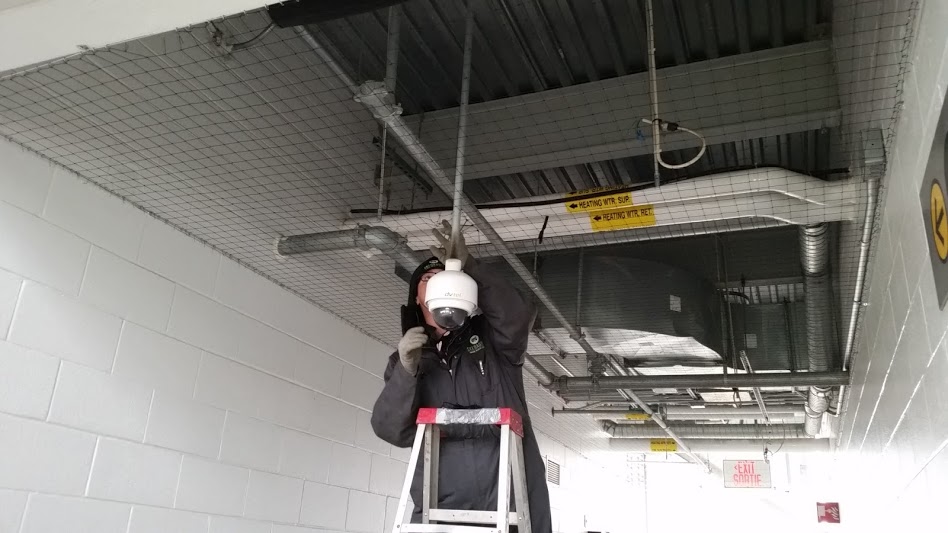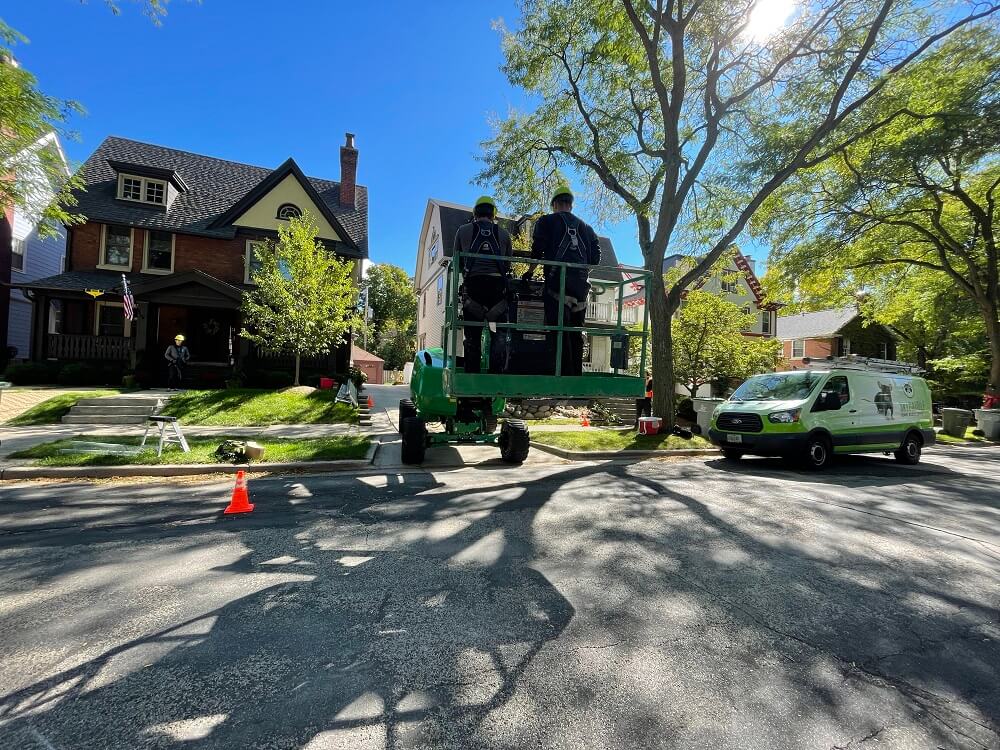BIRD REMOVAL PROCESS
Assess and Remove
The first step in resolving a nuisance bird issue is a thorough understanding of the exact nature of the problem. Our customized removal plans take into account the species of bird involved, the affected areas of the home and the time of year.
Clear and Clean
Birds can be messy, their nesting material and droppings can cause home damage and result in unsanitary conditions. As part of the process our trained technicians will remove nests from vents, soffits and balconies and safely scrub away unhealthy droppings.
Prevent and Protect
Our prevention plans are customized to address the specific bird threats your home faces. Our technicians are trained to install protective barriers and devices designed to make your home inhospitable to birds.
Hennepin County, Minnesota, is an area full of forests, rocky crevices, open fields and bodies of water. The beautiful region is home to many types of wildlife, and it also houses more than one million residents. People who live in the area often interact with various wild animals. There are many bird species native to Minnesota, making birds one of the most common types of wildlife for people to see in Hennepin County.
Unlike other forms of wildlife, birds thrive in heavily populated areas. Birds only need decent places to nest and a good source of food to survive. Although they often find suitable places to live in backyards and open parks, some birds accidentally find their way onto front porches and inside homes in search of shelter. If you find yourself in this situation, contacting Skedaddle Humane Wildlife Control for bird removal in Hennepin County is your best course of action.

Species of Birds in Hennepin County
There are roughly 10,000 species of birds in the entire world, and more than 400 varieties are native to Minnesota. Because Hennepin County is surrounded by lush, rolling forests, it is an ideal environment for many types of birds. Residents of the area may be able to protect their homes from bird infestations by learning how to identify the species that live in the area.
Pigeons are commonly found in many heavily populated areas such as Minneapolis. In more suburban areas, you can expect to see:
-
Downy woodpeckers
-
Common starlings
-
American robins
-
House sparrows
Minnesota birds thrive in the environment Hennepin County has to offer. With numerous lakes scattered across the county, and plenty of untouched green spaces, several bird populations successfully nest, roost and feed in the communities each year. The type of challenge that arises, however, is different in every community. Residents in high-rise buildings in Bloomington often deal with roosting pigeons and seagulls, creating serious health concerns along rooflines and sidewalks, while those living in single unit homes commonly face problems with starlings nesting inside their vents.
How Birds Damage Property
Birds come in a wide variety of shapes, colors and sizes. The ones you find nesting in your house are almost always small, but they can still cause significant damage to the structure of your home. Some birds, such as woodpeckers, chip away at the wooden beams inside your home and compromise the integrity of the structure. However, the damage caused by most birds is much more superficial.
Birds use a wide variety of random materials to make this. In rural environments, they often rely on grass and twigs to make nests. In urban and suburban areas, they take advantage of man-made materials. You may find scraps of insulation in your home or shredded keepsakes where birds have torn them apart to use for nesting materials.
Like many other animals, birds are only dangerous when they spread diseases through their droppings. Having a bird on your property is not inherently dangerous, but if you have one nesting on your front porch, you are more likely to come in contact with its feces and could end up getting sick.
The final danger of having birds on your property is that the small creatures attract predators. Snakes, in particular, are attracted to small birds and their eggs, so you may deal with other types of wildlife if you allow birds to live in or around your home.
Steps Skedaddle Takes for Bird Removal
With the rapid growth and development of Hennepin County, many birds have started nesting in residential buildings. You may find nests in outbuildings, barns, sheds, attics or front porches. Getting rid of birds is trickier than it sounds because the animals are almost impossible to catch. Relocation is rarely an effective strategy, so instead of harming the animals, Skedaddle uses exclusion tactics to get them out of your home in a humane manner.
We first assess your property to determine the extent of the bird infestation. We check each nest for the presence of eggs because this information affects our removal strategy. During this assessment, we also identify points of entry that give birds access to your home.
Before we begin removal, we use exclusion practices to board up any holes that give the animals entry. If we patch up these spots before we remove the birds, they will be unable to return.
We move birds’ nests outdoors in a place where the animals can easily find them. We use special caution if we see any eggs because we do not want to give a mother bird a reason to abandon her babies.
The final step in bird removal is to point out materials in your home that the creatures may use to make nests. By eliminating these potential nesting materials, you can make your home a less appealing environment for birds so they are more likely to move on in search of a more suitable home.
Let Skedaddle Help With Bird Removal in Hennepin County
When compared to other types of wildlife, birds are relatively harmless. They are not aggressive to people, but they can spread diseases through their droppings. Skedaddle Humane Wildlife Control is ready to help with bird removal in Hennepin County if you find one of the creatures living in or around your home. Contact us today to learn more about our bird control services.

Bird Facts
FACT:
Canadian Geese can poop up to 15 times per hour! This leaves many business, trails and sidewalks covered in droppings throughout Minnesota summers.
FACT:
The state bird of Minnesota is the Common Loon. Loons are waterbirds, which means they only leave the water to mate and lay their eggs.
FACT:
Pigeon droppings are acidic and can stain building materials like shingle, siding and brick
FACT:
Minnesota is home to approximately 428 different species of birds. Of these species, only about 20 do not migrate for the winter. Both pigeons and starlings stick around in the state year round.


